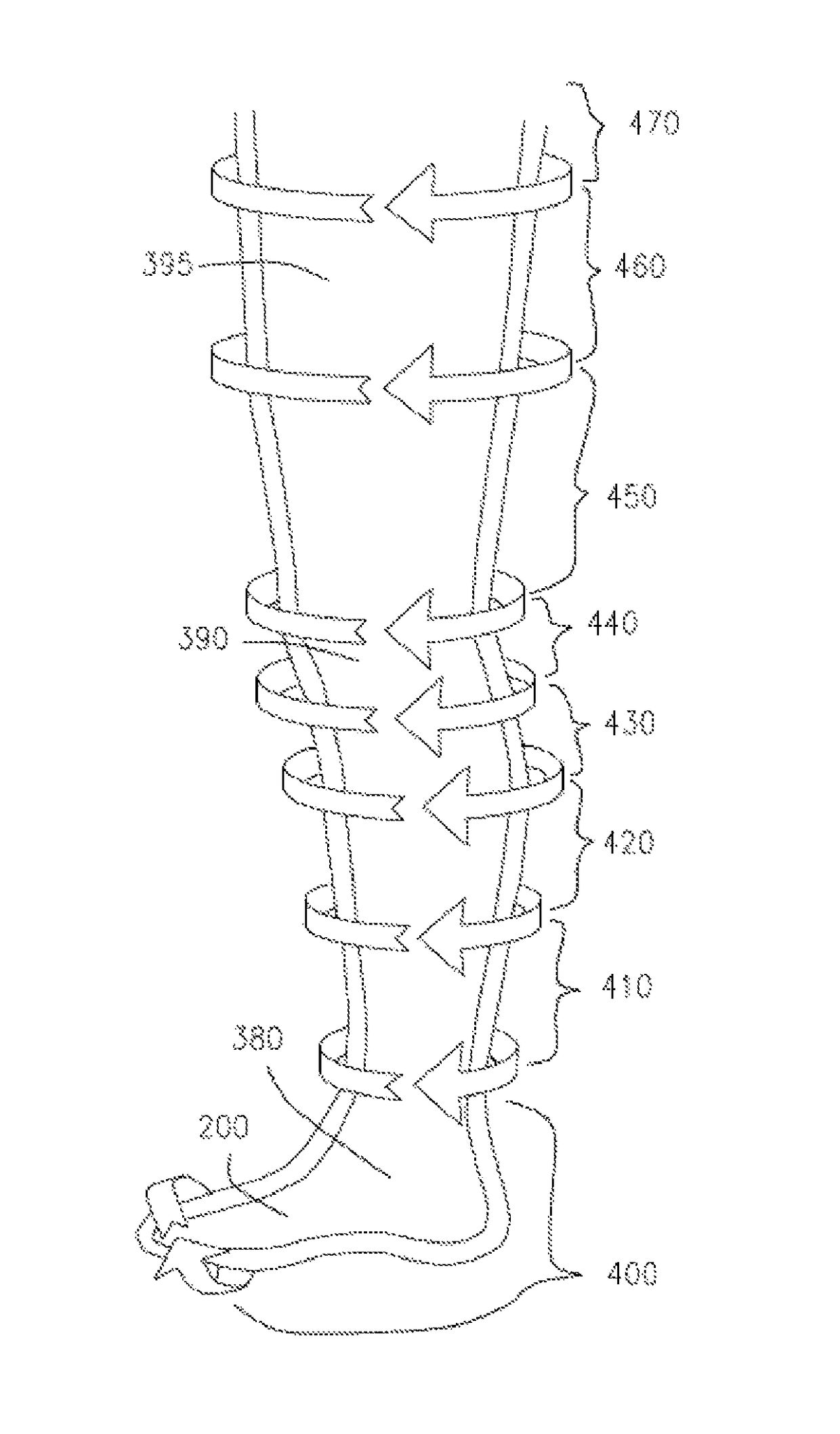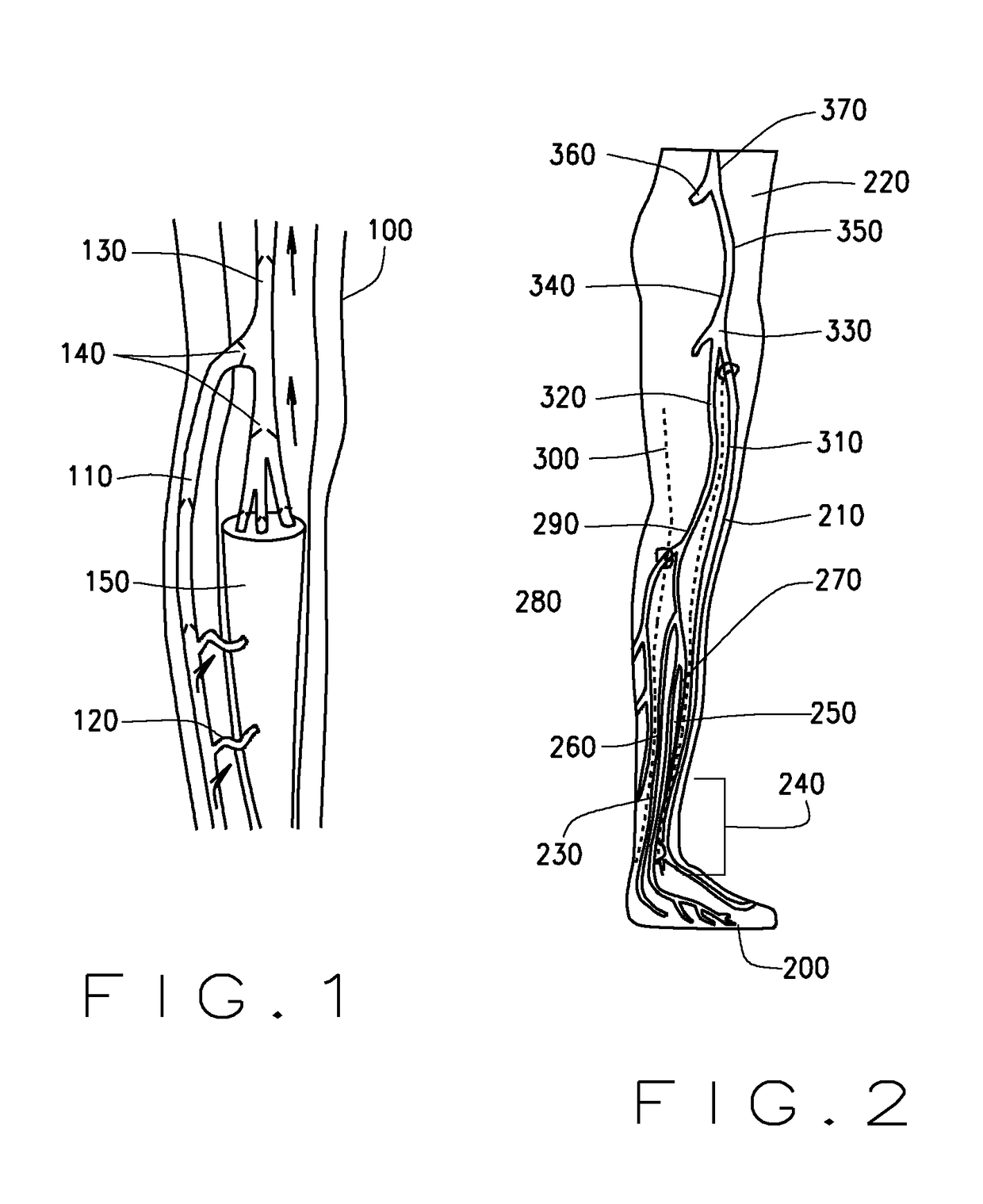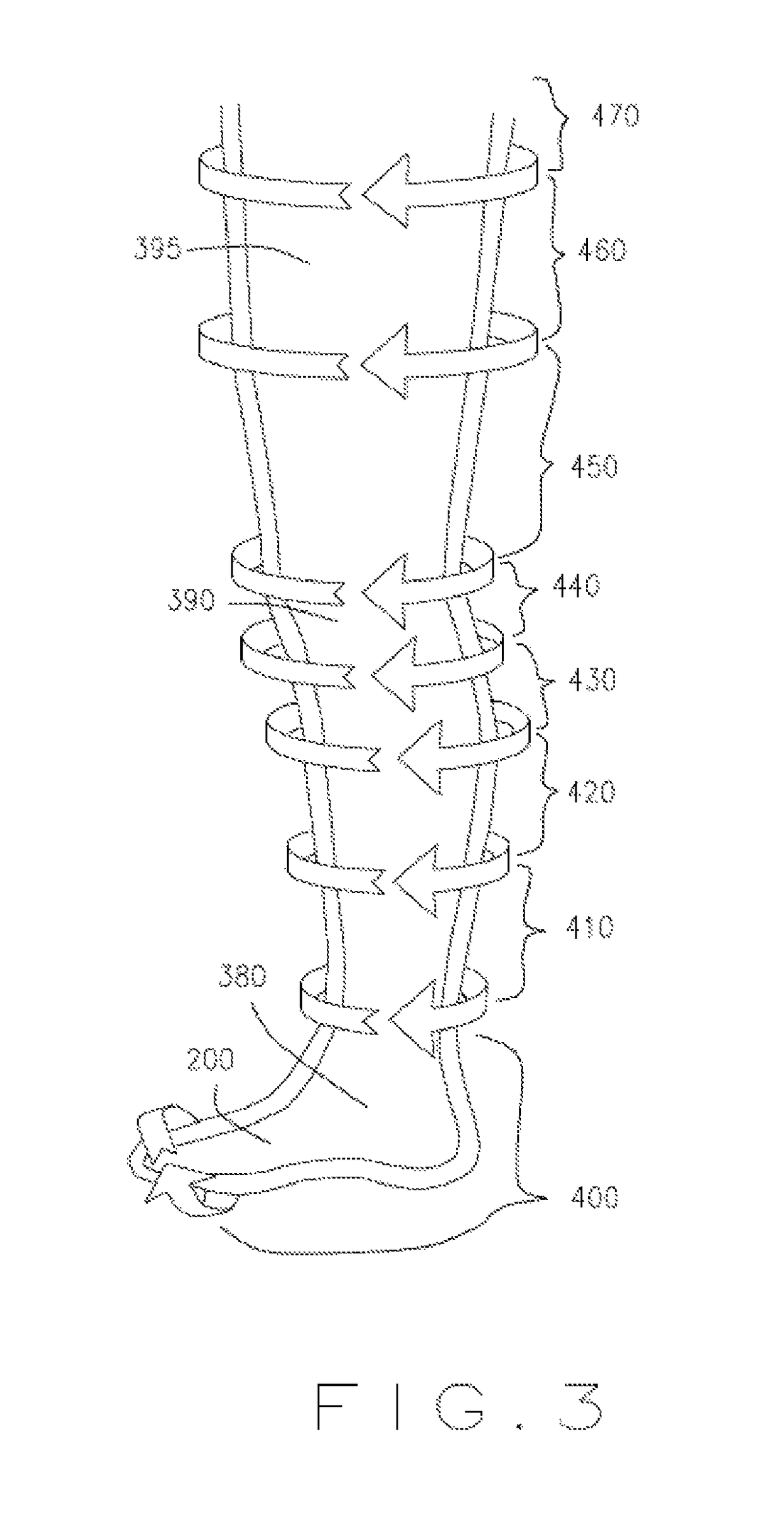Compression knitted article
a compression article and knitting technology, applied in the field of knitted compression articles, can solve the problems of little or no beneficial clinical effect of pressure, and achieve the effect of avoiding problems, and improving the blood return from the legs of such individuals
- Summary
- Abstract
- Description
- Claims
- Application Information
AI Technical Summary
Benefits of technology
Problems solved by technology
Method used
Image
Examples
Embodiment Construction
[0025]The present invention provides compression hosiery for improved vascular health including a knitted article having graduated compression density that simulates human vein valve distribution and functional effects in the legs.
[0026]Referring now to the drawings in general, the illustrations are for the purpose of describing a preferred embodiment of the invention and are not intended to limit the invention thereto.
[0027]FIG. 1 is a schematic representation of normal venous return in the calf area of a leg 100. The venous return includes a superficial vein 110 leading to a deep vein 130 via a perforator vein 120. Both the deep vein 130 and superficial vein 120 include one-way valves 140, which act to prevent flow of blood toward the foot by closing when blood flow is urged downward by gravity or rest. As is known in the art, the calf muscle 150 acts as a pump when it contracts and such contraction urges venous blood upward, thereby opening the one-way valves to allow blood flow ...
PUM
 Login to View More
Login to View More Abstract
Description
Claims
Application Information
 Login to View More
Login to View More - R&D
- Intellectual Property
- Life Sciences
- Materials
- Tech Scout
- Unparalleled Data Quality
- Higher Quality Content
- 60% Fewer Hallucinations
Browse by: Latest US Patents, China's latest patents, Technical Efficacy Thesaurus, Application Domain, Technology Topic, Popular Technical Reports.
© 2025 PatSnap. All rights reserved.Legal|Privacy policy|Modern Slavery Act Transparency Statement|Sitemap|About US| Contact US: help@patsnap.com



